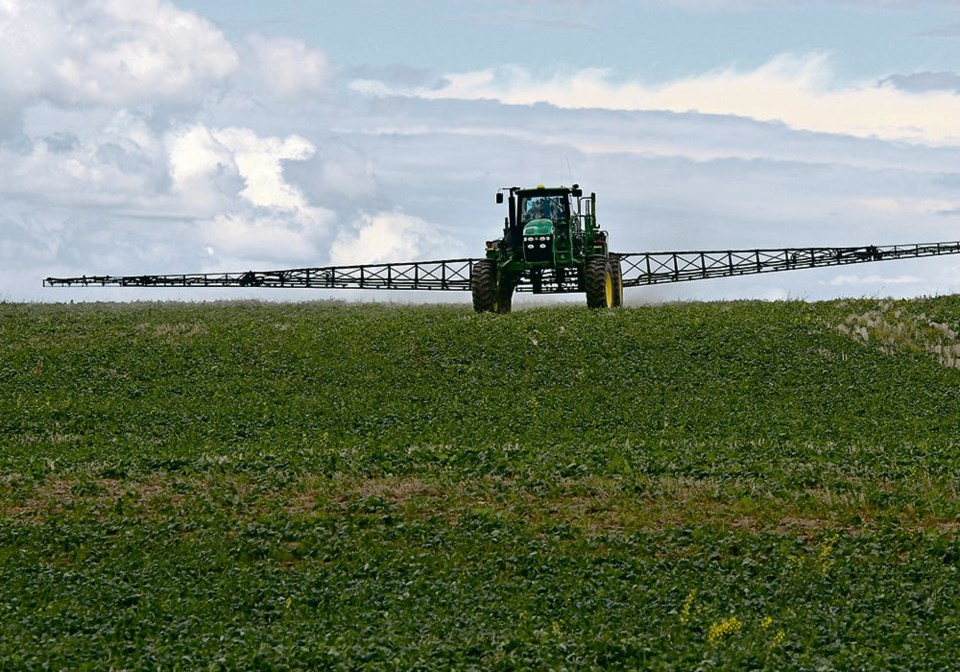WESTERN PRODUCER — Bayer began its acquisition of Monsanto in 2016, and the takeover was finalized in 2018.
With the transaction, Bayer became the rights holder of Roundup, which Monsanto commercialized in 1974. The patent on Roundup expired in 2000, allowing other companies to produce generic versions of glyphosate, the ingredient in Roundup that kills weeds.
As of 2024, 58 species of weeds have developed resistance to glyphosate, says the .
As well, weed scientists have said glyphosate is less effective or no longer effective on important weed species in North America, such as kochia and waterhemp.
Since this trend is likely to continue, glyphosate will become less important for weed control on commercial farms, they say.
The Western Producer contacted Bayer CropScience Canada for the company’s perspective on the future role of glyphosate on Canadian farms.
Q: Over the last 25 years in North America, some important weed species have adapted and evolved resistance to glyphosate.
How does Bayer see this? Has the efficacy of glyphosate declined substantially on major weeds in North America? Has this happened more quickly than expected?
A: Over time, some weed species develop resistance to certain crop protection products, including glyphosate. This is either part of nature’s natural process of mutation or an adaptation in response to certain cultural practices.
After nearly 50 years, Roundup agricultural herbicide is still one of the most effective — and popular — herbicides in the Canadian crop protection market.
Despite the presence of these resistant populations within the overall population, Roundup formulations continue to provide value to western Canadian farmers through effective control of multiple species from burn-down to post-harvest.
Different glyphosate formulations will perform differently across the range of conditions they are subjected to, but we’re confident in our Roundup branded formulations and their ability to control susceptible weeds.
For the most part, habits create resistance, and we’re working hard at Bayer to share information with the agriculture community on the value of using strategies, such as multiple effective modes of action, to delay or manage weed resistance using permissible herbicide tank mixes.
There are also other strategies that can help manage weeds in general, such as crop rotation, using competitive crops and mechanical weed control, to name a few.
Q: Experts have said that glyphosate will become a complementary herbicide on Canadian farms, something that growers use to control other weeds but not the critical weeds that drive management decisions on farms.
What is Bayer’s perspective on the future of glyphosate?
A: Is glyphosate complementary or is it the solid foundation on which a sound weed control strategy is built? Since it brings one of the broadest labels in terms of weed species controlled, adoption of tank mix practices utilizing multiple effective modes of action is key to protecting yield potential, as well as managing weed resistance concerns.
It is well known that reducing crop competition during the critical weed-free period of any crop is key to protecting yield potential. Having a herbicide program that delivers multiple effective modes of action that eliminate emerged weeds, as well as provide residual control, is key. This also helps to manage weed resistance.
Research shows that tank mixes are more effective at delaying resistance than herbicide rotations. For the current weed control recommendations for glyphosate-resistant weed biotypes, refer to .
Q: is there data showing that Canadian farmers have moved away from “only glyphosate” and have adopted more diverse weed control tactics? Are those changes happening rapidly enough, on a sufficient number of acres, to preserve the efficacy of glyphosate for decades to come?
A: In a word, yes. If we look at canola and cereal production, more and more farmers are tank-mixing multiple products when applying a burn-down to manage their weeds. This is an agronomically sound practice that we fully support and will be more and more vocal about with the launch of products like Huskie PRE herbicide in 2024 for cereals, as well as products that will be introduced in the future.
If we look to soybeans, over 80 per cent of the Roundup Ready Xtend Crop System acres in Canada are receiving a tank mix. Be it in herbicides, fungicides, insecticides or insect biotech traits, the use of multiple effective modes of action isn’t about preserving any one active ingredient — it’s about providing the best foot forward for protecting yield and has the added benefit of prolonging the tools we have available to us for crop production in Canada.
Related
About the Author




